

Flight Training Blog
GLIDERBOOKS Flight Training Blog
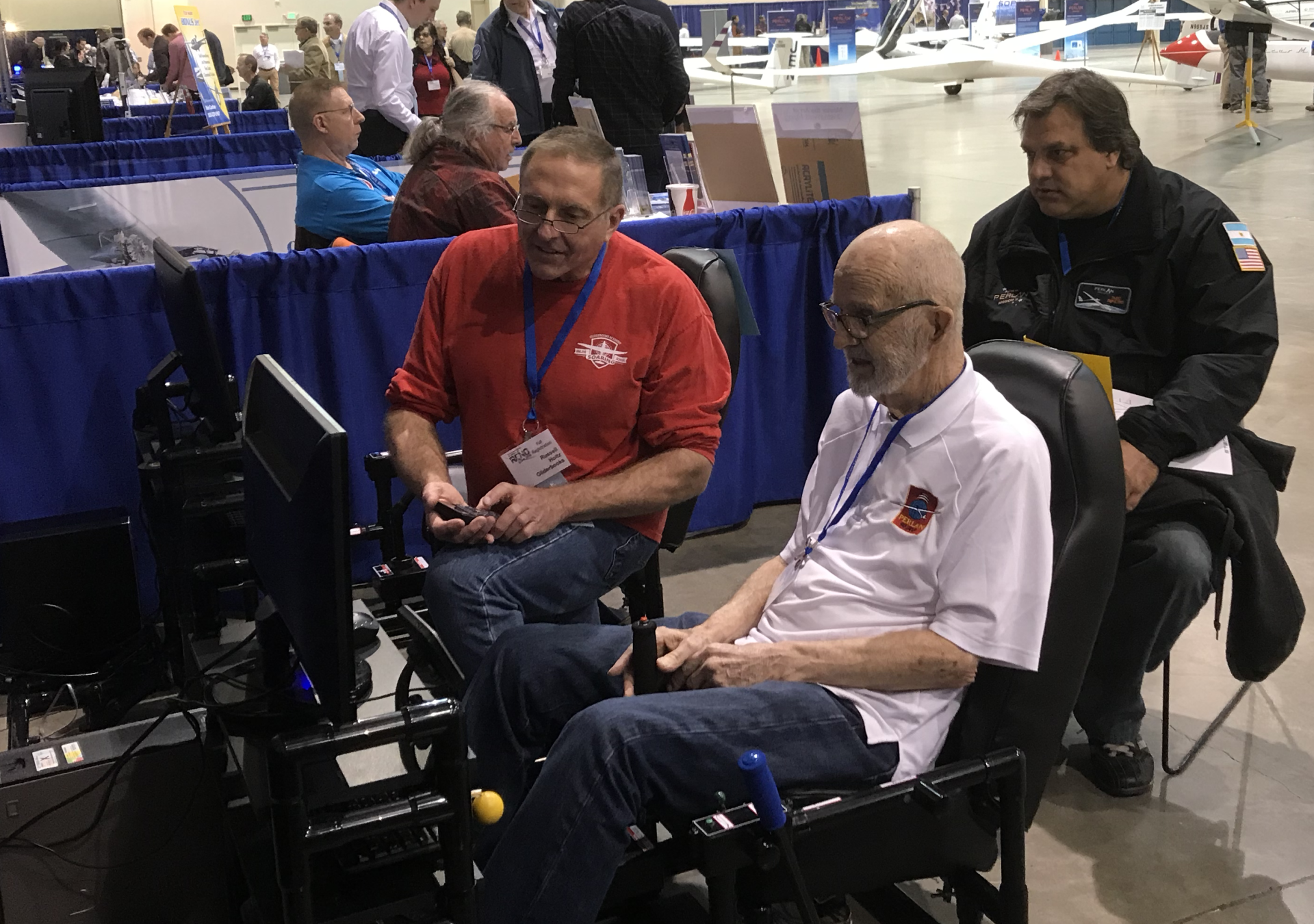
By Russell Holtz
•
30 Jan, 2019
One of the things that experienced glider pilots and instructors say is that even though they have tons of experience, they can NOT fly a glider well in Condor, especially on tow. There are two reasons for this that they need to understand. If they are using a joystick on a table, they are controlling the stick using their shoulder muscles, not their fingertips like they would in a glider. This means that while they KNOW what to do with the stick, they have to learn a different way to cause those movements, which takes them back to being a beginner again. In the Mach 0.1, they would have their forearm resting on their thigh, just like in the real glider, and controlling the stick with their fingertips. We have found that at the conventions, CFI-G’s who say Condor is a waste of time change their opinion after flying in the Mach 0.1. Without exception, every experienced pilot was able to fly the tow on Condor when they were in the Mach 0.1. Second, experienced pilots are hardwired to expect to feel the movement of the glider when they move the controls. When they don’t get this feedback, they instinctively move the controls more, leading to over controlling. Again, this makes some instructors think that Condor is not accurately modeling how a glider behaves. When a student, with little or no experience gets in the sim, they are controlling the glider based on visual cues, and don’t have the hard wired response yet of expecting to feel the gliders movement, so they don’t have this problem with over controlling.
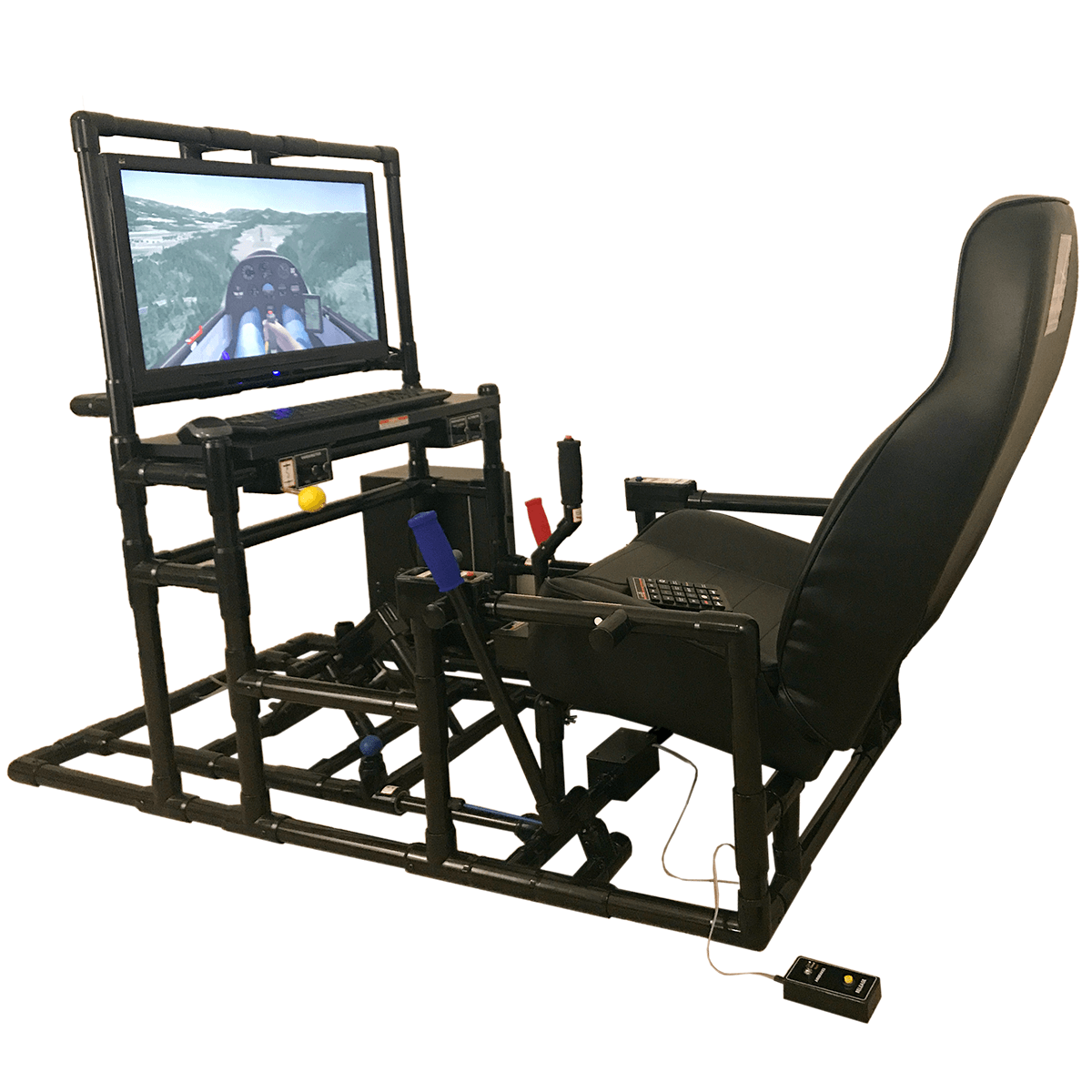
By Russell Holtz
•
09 Jan, 2019
All of the Benefits of the Original Design The MACH 0.1 allows students and pilots to do basic training, master core concepts, and explore new scenarios using soaring flight simulator software in a realistic glider cockpit configuration. The natural control layout includes stick, adjustable rudder pedals, spoilers, wheel brake, landing gear, trim, and a tow release handle. Reduce time & costs involved in training Make use of inclement weather days Practice emergency situations Concentrate on specific maneuvers Keep students engaged Enjoy more soaring time Plus Updated Design Features 4x greater control precision Integrated monitor mount Simplified assembly Modular, PCB-based design for increased reliability and serviceability
Still Available at the economical price of just $1899 Choice of Integrated Monitor Mounts The new version of the Mach 0.1 Simulated Glider Cockpit includes an integrated monitor mount. This keeps the monitor from accidentally getting knocked over. The Standard monitor mount will fit monitors with an outside width of up to 24.25 inches. Many 27" monitors fit this criterion. This mount protects the monitor when the simulator is being moved. The screen of the monitor is set back from the frame, so it can be laid on a flat surface without touching. The standard mount accommodates monitors with a 100mm hole pattern. The Large monitor mount will hold monitors with a weight of up to 20 pounds. The large mount accommodates monitors with either a 100mm or 200mm hole pattern. Please Note: Instructor Remote is available as an optional add-on. Computer, monitor, monitor screws, keyboard, mouse, and Condor software NOT included.

By Russell Holtz & Rhonda Clerkin
•
14 Nov, 2018
In the summer of 2018, the United States Air Force Academy began using Mach 0.1 Simulated Glider Cockpits as part of their "Glider Airmanship" course. The data collected from the course shows that the solo rate for students who completed the course in 2018 was more than double the solo rate of the previous two years.
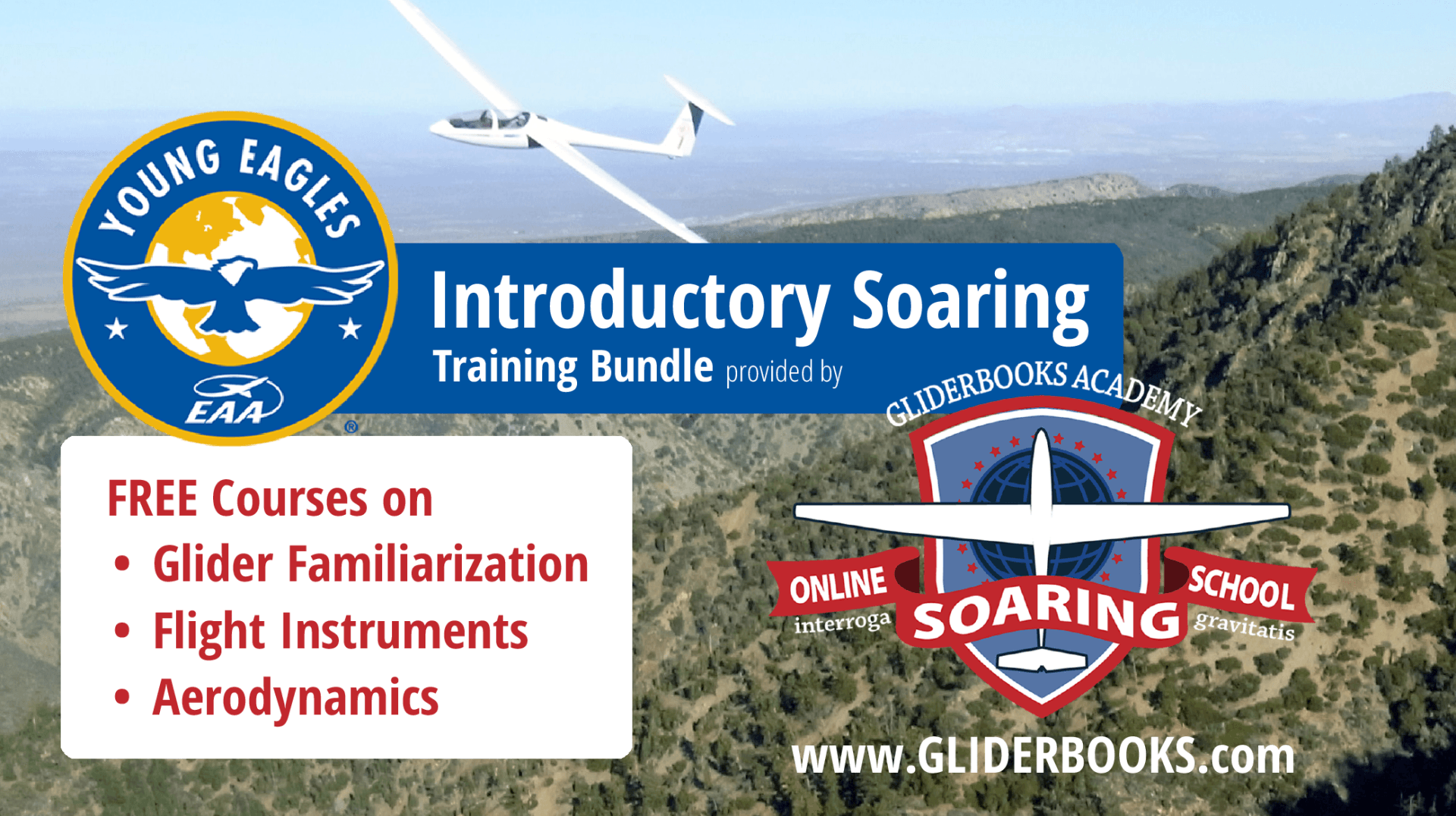
By Rhonda Clerkin
•
10 Oct, 2018
GLIDERBOOKS.com is partnering with the EAA to bring glider training opportunities to Young Eagles participants. Launched in 1992, the Young Eagles program has dedicated more than 25 years to giving youth ages 8–17 their first free ride in an airplane. This first flight opens the door to a complete EAA Flight Plan that includes an EAA Student membership, free online flight training, free first lesson, and access to flight training scholarship opportunities. Sporty’s supplies the free online training for power planes. GLIDERBOOKS Academy will now supply the free online glider training. Young Eagles participants will have access to a one-year subscription to GLIDERBOOKS Academy’s “Fly Gliders! - Young Eagles Glider Training Bundle” which includes courses on glider familiarization, instruments, and aerodynamics. This package is valued at $95. GLIDERBOOKS Academy has been working with the EAA on the goal of increasing youth interest in aviation. Beginning flight training in gliders allows young people to fulfill their dreams of flying at a younger age and at a lower cost. Students are allowed to solo in gliders at only 14 years old and can get their private license at 16. With a general decline in the number of people involved in aviation, we hope to increase interest and provide an avenue for these youth to explore all that aviation has to offer.
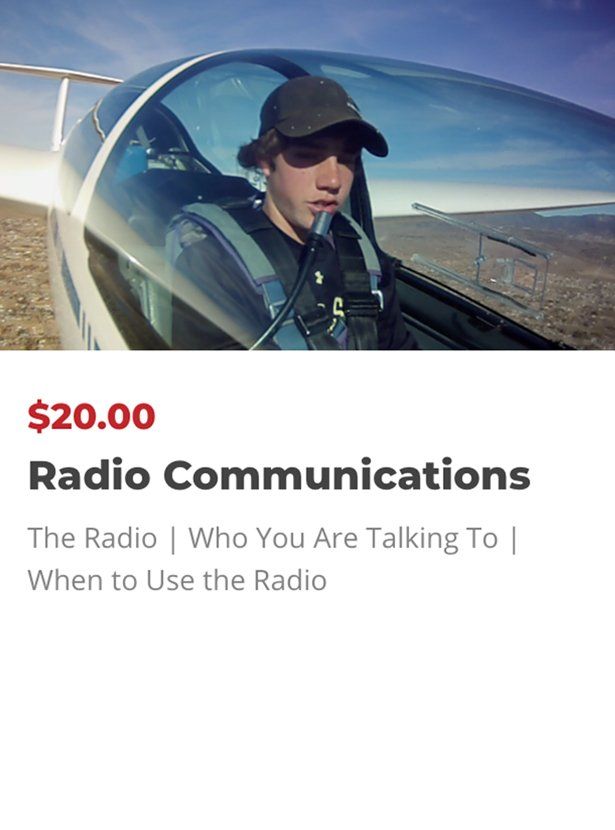
By Rhonda Clerkin
•
10 Oct, 2018
The radio plays several roles for the glider pilot. It enhances safety by letting you know about other air traffic near you. It is a way of obtaining information about the weather and special use airspace activity. And it allows you to keep in touch with other gliders, and your crew while on long flights. This course teaches you what you need to know to communicate precisely, efficiently, and confidently using the radio. The course is broken into three main sections. The first part, Radio Technique, introduces you to the functions of the radio and covers some basic radio phraseology, such as the phonetic alphabet and how we format a radio call. https://academy.gliderbooks.com/courses/radio-communicationsWho You Are Talking To teaches you about the different entities that you'll be communicating with on the radio, what services they can provide, and how to address them. These include other aircraft, Flight Service Stations, and ATC, or air traffic control, which is comprised of Tower and Ground control, Air Route Traffic Control Centers, and Approach and Departure Control. Finally, When to Use the Radio gives you many different examples of radio calls, starting out at non-towered airports, then towered airports, and radio calls that you might make on long cross-country flights, and how you would use the radio during an urgent or emergency situation. The course also includes some useful downloads and resource links.
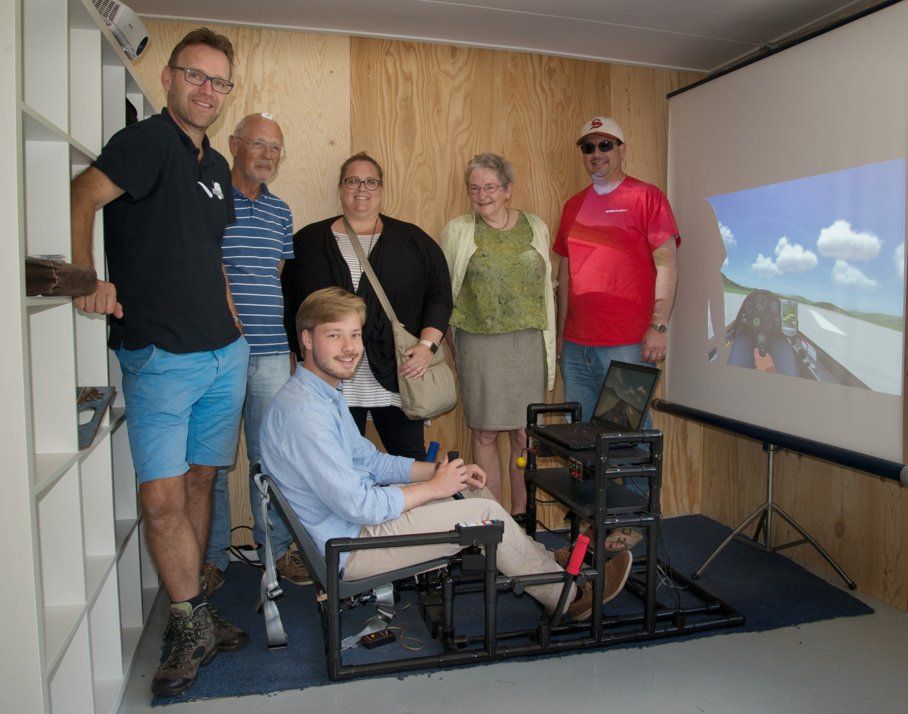
By Rhonda Clerkin
•
15 Aug, 2018
On a recent trip to Amsterdam, I had the pleasure of visiting the Netherlands ZCNOP glider club in Marknesse. They had recently purchased a Mach 0.1 simulator from us and I was interested to check in and see how it was working for them. It was a picturesque soaring day when several members of the club and three board members from the Dutch Gliding Association met us at the clubhouse to talk about how they are using the simulator and the potential for its use in other clubs. The Mach 0.1 is set up in a corner of their clubhouse on its very own “flying carpet”. When we walked in there were several people crowded around watching as someone flew the simulator. The club members see that as a great strength of using the simulator -- the ability to learn as a group from instructors, more experienced pilots, and each other. While they have only been using the Mach 0.1 for a few months, and do not have any hard data yet, from what they have seen so far, they are expecting a 20% decrease in training time with using the sim. The standard practice at this club is to have morning briefing at 10:00. They have designated 9:00-10:00 as simulator training time where an instructor works with 4 students for an hour, each getting 15 minutes of “flying” time. Club members have been showing up earlier and earlier to get time on the sim before their time in the air. On bad weather days, the sim may get flown all day long. Besides the training benefits, one of the greatest unexpected benefits they have seen is the increased camaraderie between new club members as they get to know each other through showing up early and using the sim. They have also been able to take the Mach 0.1 into the community to introduce others to the sport, even using it as a fundraiser by raffling off ”flight time” on the sim. Dutch Gliding Association board members Lonneke Halsema, Noah Verhoef, and Ed Westerhof were interested in ZCNOP’s experience with using the sim and wanted to share that experience with the other 40 Dutch clubs in hopes of encouraging, and possibly helping to finance, the adoption of simulator training in all of the clubs. I appreciate the warm welcome we were given and encourage anyone visiting the area to go visit them. We look forward to working with them to help increase the efficiency of training and bring more people to the sport of soaring in the US and abroad.
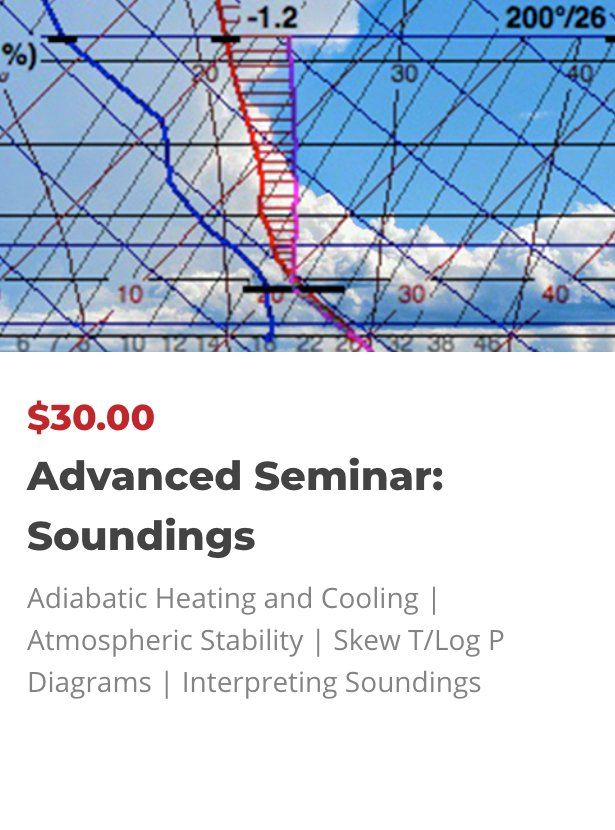
By Rhonda Clerkin
•
15 Aug, 2018
Atmospheric Sounding data provides a pilot with the most detailed description of the state of the atmosphere at a specific location. A sounding is simply a plot of the vertical distribution of the temperature, dew point, wind speed, and wind direction. However, with this information, and the knowledge to interpret it, a glider pilot can determine: What type of clouds will be present, if any, and their altitude How high thermals will climb If there will be thunderstorms in the area If mountain wave conditions will exist In addition, airplane pilots can determine: Icing levels Smoothest cruising altitudes Best cruising altitudes based on wind and direction of flight If you have always wanted to be able to interpret soundings, but found them to be incomprehensible, this course will help you to understand the phenomena of adiabatic heating/cooling and atmospheric stability, which are the key to understanding the data. You will also learn how to use the Skew T/Log P diagram to determine how the properties of a parcel of air change as it moves up and down in the atmosphere. With this background knowledge, actually interpreting the soundings data will be simple!

By Russell Holtz
•
30 Jan, 2019
One of the things that experienced glider pilots and instructors say is that even though they have tons of experience, they can NOT fly a glider well in Condor, especially on tow. There are two reasons for this that they need to understand. If they are using a joystick on a table, they are controlling the stick using their shoulder muscles, not their fingertips like they would in a glider. This means that while they KNOW what to do with the stick, they have to learn a different way to cause those movements, which takes them back to being a beginner again. In the Mach 0.1, they would have their forearm resting on their thigh, just like in the real glider, and controlling the stick with their fingertips. We have found that at the conventions, CFI-G’s who say Condor is a waste of time change their opinion after flying in the Mach 0.1. Without exception, every experienced pilot was able to fly the tow on Condor when they were in the Mach 0.1. Second, experienced pilots are hardwired to expect to feel the movement of the glider when they move the controls. When they don’t get this feedback, they instinctively move the controls more, leading to over controlling. Again, this makes some instructors think that Condor is not accurately modeling how a glider behaves. When a student, with little or no experience gets in the sim, they are controlling the glider based on visual cues, and don’t have the hard wired response yet of expecting to feel the gliders movement, so they don’t have this problem with over controlling.

By Russell Holtz
•
09 Jan, 2019
All of the Benefits of the Original Design The MACH 0.1 allows students and pilots to do basic training, master core concepts, and explore new scenarios using soaring flight simulator software in a realistic glider cockpit configuration. The natural control layout includes stick, adjustable rudder pedals, spoilers, wheel brake, landing gear, trim, and a tow release handle. Reduce time & costs involved in training Make use of inclement weather days Practice emergency situations Concentrate on specific maneuvers Keep students engaged Enjoy more soaring time Plus Updated Design Features 4x greater control precision Integrated monitor mount Simplified assembly Modular, PCB-based design for increased reliability and serviceability
Still Available at the economical price of just $1899 Choice of Integrated Monitor Mounts The new version of the Mach 0.1 Simulated Glider Cockpit includes an integrated monitor mount. This keeps the monitor from accidentally getting knocked over. The Standard monitor mount will fit monitors with an outside width of up to 24.25 inches. Many 27" monitors fit this criterion. This mount protects the monitor when the simulator is being moved. The screen of the monitor is set back from the frame, so it can be laid on a flat surface without touching. The standard mount accommodates monitors with a 100mm hole pattern. The Large monitor mount will hold monitors with a weight of up to 20 pounds. The large mount accommodates monitors with either a 100mm or 200mm hole pattern. Please Note: Instructor Remote is available as an optional add-on. Computer, monitor, monitor screws, keyboard, mouse, and Condor software NOT included.

By Russell Holtz & Rhonda Clerkin
•
14 Nov, 2018
In the summer of 2018, the United States Air Force Academy began using Mach 0.1 Simulated Glider Cockpits as part of their "Glider Airmanship" course. The data collected from the course shows that the solo rate for students who completed the course in 2018 was more than double the solo rate of the previous two years.

By Rhonda Clerkin
•
10 Oct, 2018
GLIDERBOOKS.com is partnering with the EAA to bring glider training opportunities to Young Eagles participants. Launched in 1992, the Young Eagles program has dedicated more than 25 years to giving youth ages 8–17 their first free ride in an airplane. This first flight opens the door to a complete EAA Flight Plan that includes an EAA Student membership, free online flight training, free first lesson, and access to flight training scholarship opportunities. Sporty’s supplies the free online training for power planes. GLIDERBOOKS Academy will now supply the free online glider training. Young Eagles participants will have access to a one-year subscription to GLIDERBOOKS Academy’s “Fly Gliders! - Young Eagles Glider Training Bundle” which includes courses on glider familiarization, instruments, and aerodynamics. This package is valued at $95. GLIDERBOOKS Academy has been working with the EAA on the goal of increasing youth interest in aviation. Beginning flight training in gliders allows young people to fulfill their dreams of flying at a younger age and at a lower cost. Students are allowed to solo in gliders at only 14 years old and can get their private license at 16. With a general decline in the number of people involved in aviation, we hope to increase interest and provide an avenue for these youth to explore all that aviation has to offer.

By Rhonda Clerkin
•
10 Oct, 2018
The radio plays several roles for the glider pilot. It enhances safety by letting you know about other air traffic near you. It is a way of obtaining information about the weather and special use airspace activity. And it allows you to keep in touch with other gliders, and your crew while on long flights. This course teaches you what you need to know to communicate precisely, efficiently, and confidently using the radio. The course is broken into three main sections. The first part, Radio Technique, introduces you to the functions of the radio and covers some basic radio phraseology, such as the phonetic alphabet and how we format a radio call. https://academy.gliderbooks.com/courses/radio-communicationsWho You Are Talking To teaches you about the different entities that you'll be communicating with on the radio, what services they can provide, and how to address them. These include other aircraft, Flight Service Stations, and ATC, or air traffic control, which is comprised of Tower and Ground control, Air Route Traffic Control Centers, and Approach and Departure Control. Finally, When to Use the Radio gives you many different examples of radio calls, starting out at non-towered airports, then towered airports, and radio calls that you might make on long cross-country flights, and how you would use the radio during an urgent or emergency situation. The course also includes some useful downloads and resource links.

By Rhonda Clerkin
•
15 Aug, 2018
On a recent trip to Amsterdam, I had the pleasure of visiting the Netherlands ZCNOP glider club in Marknesse. They had recently purchased a Mach 0.1 simulator from us and I was interested to check in and see how it was working for them. It was a picturesque soaring day when several members of the club and three board members from the Dutch Gliding Association met us at the clubhouse to talk about how they are using the simulator and the potential for its use in other clubs. The Mach 0.1 is set up in a corner of their clubhouse on its very own “flying carpet”. When we walked in there were several people crowded around watching as someone flew the simulator. The club members see that as a great strength of using the simulator -- the ability to learn as a group from instructors, more experienced pilots, and each other. While they have only been using the Mach 0.1 for a few months, and do not have any hard data yet, from what they have seen so far, they are expecting a 20% decrease in training time with using the sim. The standard practice at this club is to have morning briefing at 10:00. They have designated 9:00-10:00 as simulator training time where an instructor works with 4 students for an hour, each getting 15 minutes of “flying” time. Club members have been showing up earlier and earlier to get time on the sim before their time in the air. On bad weather days, the sim may get flown all day long. Besides the training benefits, one of the greatest unexpected benefits they have seen is the increased camaraderie between new club members as they get to know each other through showing up early and using the sim. They have also been able to take the Mach 0.1 into the community to introduce others to the sport, even using it as a fundraiser by raffling off ”flight time” on the sim. Dutch Gliding Association board members Lonneke Halsema, Noah Verhoef, and Ed Westerhof were interested in ZCNOP’s experience with using the sim and wanted to share that experience with the other 40 Dutch clubs in hopes of encouraging, and possibly helping to finance, the adoption of simulator training in all of the clubs. I appreciate the warm welcome we were given and encourage anyone visiting the area to go visit them. We look forward to working with them to help increase the efficiency of training and bring more people to the sport of soaring in the US and abroad.
